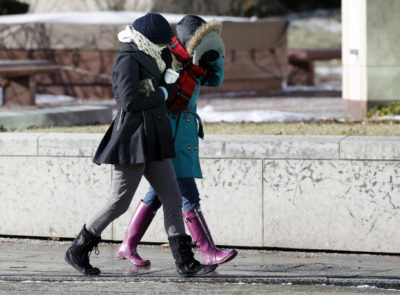 Freezing temperatures across the United States this week have placed an extraordinary burden on the power grid – and in some places have served as a reminder of its vulnerabilities.
Freezing temperatures across the United States this week have placed an extraordinary burden on the power grid – and in some places have served as a reminder of its vulnerabilities.
It is so cold that cargo ships are getting caught in a frozen Detroit River, forcing them to rely on icebreakers.
In the South, the Electric Reliability Council of Texas (ERCOT) issued an Energy Emergency Alert 2 on Monday as the state’s main power grid barely avoided overwhelming outages. The level two alert is the final step in the process before rotating power outages are implemented. Weather-related issues caused the loss of two big power plants that totaled an approximate 3,700 megawatt power decrease, according to the Fort Worth Star-Telegram. ERCOT was urging citizens to conserve power.
ERCOT’s Dan Woodfin told the media that the loss of just one more large power plant could have “pushed the grid over the edge.”
During the near-power outage in Texas the state was forced to import roughly 800 megawatts of power from the nation’s eastern power grid and another 180 megawatts from Mexico. One megawatt of power offers enough energy to supply 200 homes during a peak usage period and 500 during non-peak hours, the newspaper said. The arctic chill likely prompted many homeowners and businesses to run their heating units far longer and harder than is standard for this time of year – increasing peak usage hours.
Meanwhile, the Tennessee Valley Authority also reported increased electricity consumption when freezing temperatures in the single digits blanketed the South. The utility commission issued both a “Conservative Operations Alert” and a “Power Supply Alert.” The department also suspended all routine maintenance activities to reduce the risk of a power interruption.
Harness the power of the sun when the power goes out…
Said TVA Chief Operating Officer Chip Pardee:
TVA has been monitoring and carefully preparing for this blast of potentially record-cold weather since last week. We have taken proactive measures so the system remains robust and reliable for our customers and power users across the Valley.
Although Pardee sounded positive, it is likely that many folks still had their generators ready to go and wood bin filled. The power grid is perhaps America’s most important and frail piece of infrastructure. Residents in some parts on the country – including Indiana and Ohio – saw the grid actually fail, forcing them to rely on backup heat.
The electrical system in New Jersey also faced severe strain. A regional power grid operator from the state reported that the system, which serves the eastern and southern portions of America, was overloaded and PJM Interconnection asked consumers to conserve electricity.
PJM is a Pennsylvania-based organization which manages the wholesale of power to the region. The regional grid serves approximately 61 million people in 13 different states. Areas included in the service region include Ohio, New Jersey, Kentucky, Delaware, Illinois, Indiana, North Carolina, Michigan, West Virginia, Tennessee, Washington, DC. Virginian, and Maryland.
According to PJM, the polar vortex weather front caused natural gas and other types of power plants to unexpectedly shut down. A polar vortex is the circulation of upper-level, strong winds which normally flow around the North Pole in a counterclockwise path. Sometimes the polar low pressure system can become “distorted” and range much further south than is normal.
If demand becomes too high, PJM would begin rolling blackouts, which would temporarily interrupt power for specific areas to help alleviate the burden on the power grid.
Sign up for Off The Grid News’ weekly email and stay informed about the issues important to you
 Off The Grid News Better Ideas For Off The Grid Living
Off The Grid News Better Ideas For Off The Grid Living



